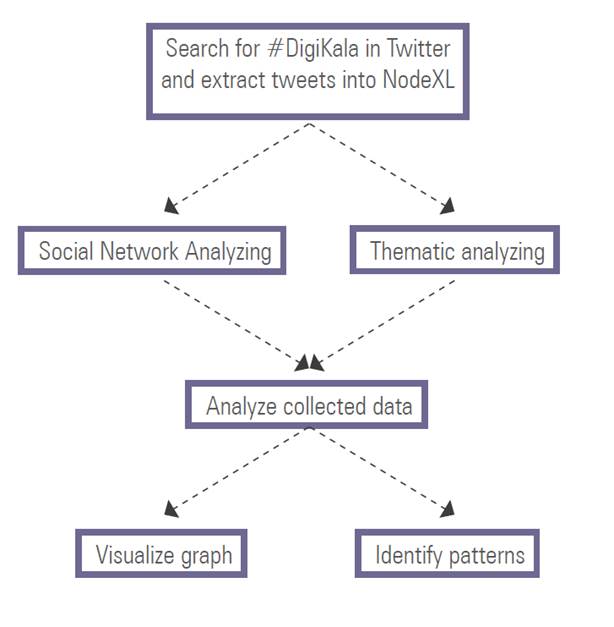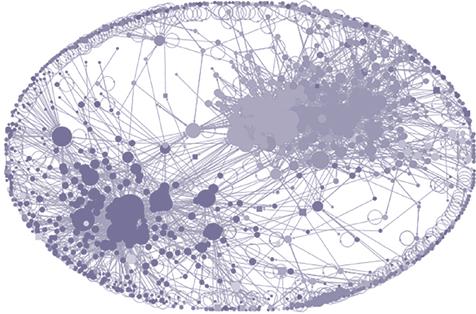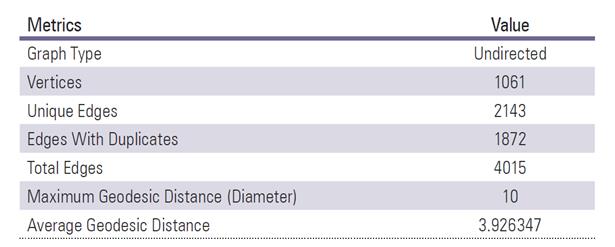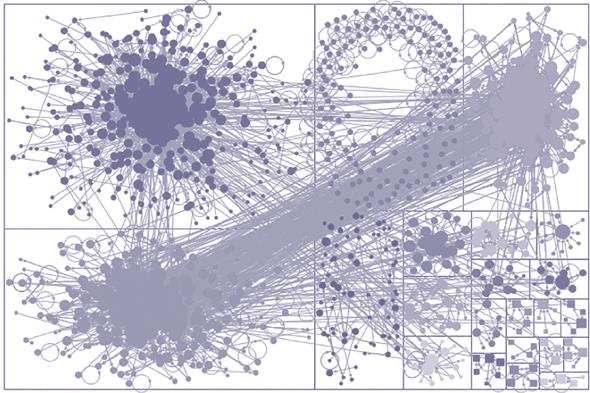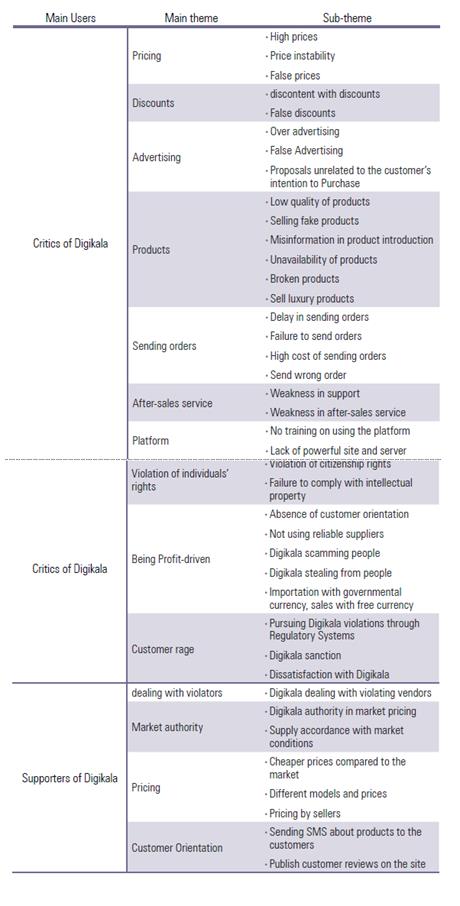INTRODUCTION
Web 3.0 is empowered by technologies of co-creation (Ciasullo, Troisi, & Cosimato, 2018; Martínez-Cañas et al., 2016) and has characterized by enabling cooperation (Fuchs, 2017). This generation of web has evolved the linear businesses into platform businesses (Parker, Van Alstyne, & Choudary, 2016) in a way that different stakeholders exchange the value they are seeking for in the Web 3.0 enterprise platform (Reillier & Reillier, 2017). In such context retailers evolve from owning of resources to control of exchange (Choudary, 2015) and global online retailers such as Amazon adopt platform-based ecosystems (Reillier & Reillier, 2017). In such dramatically evolving business environment, there are many opportunities for digital retailers to act entrepreneurial action (Achtenhagen, 2017; Khajeheian, 2016; Labafi & Williams, 2018). To address niche markets (Khajeheian, 2017) that exchange of information, commodities, and content (Parker et al., 2016).
Web 2.0 (and 3.0) also characterized by feedback, that enabled and required companies to listen to their customers to get more information about their choices and interests (Cogburn & Espinoza-Vasquez, 2011; Thackeray et al., 2008). In such case, Social networks allow users to disseminate their opinion and feeling about brands and companies’ services and products and also their purchase experience (Choi et al., 2014; Ibrahim & Wang, 2019; Maia, Almeida, & Almeida, 2008). They express their opinion in different ways such as tweet, retweet, mention, like and follow other users. In the age of e-commerce, these activities and behaviors about brands provide useful evidences and information for decision makers to discover the opportunities, solve their weaknesses and provide better customer services (Maia, Almeida, & Almeida, 2008). During an event like as Black Friday, the social media users’ activities strangely increases (Choi et al., 2014; Simpson et al., 2011). Digikala as a digital business in the online retail field is one of the Iranian most successful Start-up (Bagheri et al., 2018; Bakhshizadeh, Haji Jafar, & Nasiri, 2018) which holds Black Friday alongside the whole world. Black Friday in the USA is the day after Thanksgiving. Black Friday considers as the busiest day of the year for many sellers. Although North America is the main venue for this ritual, like many other rituals in the area, Black Friday has also spread to other countries such as Iran. Retailers and recently online stores are taking part in the event for making more profits. In this situation, the success of online stores depends on tracking social networks in which users share their feelings and opinions freely there. While the quantity of users’ interaction about brands in twitter is enormous, our understanding of customers’ perception is so limited. So, to identify users’ activities and behavioral patterns, the researcher should be familiar with the methods of identifying the behavior of the users in social media (Maia, Almeida, & Almeida, 2008). To achieve this goal, the current research deployed the social network analysis to identify users’ connections through gathering data from twitter between 7/11/2018 and 1/12/2018. So, the gathered data is used to compose the set of users who used #Digikala and have shared their social information with other users on Twitter. Additionally, we have used thematic analysis in order to extract the underlying layers of users’ activities on Twitter during Black Friday about Digikala services before, during and after sales. Contributions of this research on one hand are to extract users’ connections around #Digikala in Black Friday, which is the best way to identify the influencers and other users in emerging and forming of specific behavioral patterns and on the other hand, we have used thematic analysis method to analyze the users’ activities and extract the underlying layers of their behavior.
LITERATURE REVIEW
Digikala is considered as a successful Iranian startup in e-commerce (Bagheri et al., 2018; Bakhshizadeh, Haji Jafar, & Nasiri, 2018). As this platform-based startup sells various electronic products, it provides a reliable way for many firms to sell their products. Digikala’s market share in online retail business in Iran is 85-90% and it is considered as an Iranian equivalent of the “Amazon” (Bagheri et al., 2018; Malehmir, Maeen, & Jahangir, 2017) and is a widely visited online shop in the Middle East. Digikala’s customers can refer to previous experiences of other customers at the time of purchase. Therefore, it is essential for firms to have a strategy to communicate with these users and make them loyal customers (Kaplan & Haenlein, 2010; Munger & Zhao, 2015). Surprisingly, in addition to registering their purchase experiences on the site, customers publish their feelings and experience on social networks as well (Chappuis, Gaffe, & Parvizi, 2011; Qualman, 2013). Choi et al. (2014) and Ibrahim and Wang (2019) argued that Social Network Services users tend to express their emotional status about specific events which provides information for other users. Choi et al. (2014) investigated the social influence among users in their communications. Their results showed that users during evening are happier than afternoon times. It is clear that social media platform have appeared as a predominant digital communication tool on which customers can search and share information. Additionally, Social media offers the potential for generating awareness and passion by the viral or quick spreading of product and service experiences and ideas (Berger & Milkman, 2012). In conclusion, companies drive a proactive approach for engaging in new social media marketing strategies and plans (Marsh, Richardson, & Schmidt, 2009).
Simpson et al. (2011) studied the positive and negative behaviors that costumers demonstrated during the Black Friday shopping. Yadav et al. (2013) considered social network from a marketing perspective to create value for firms. Based on social commerce definition, researchers have developed a framework to assess marketing potential of social media for firms. Lennon, Johnson, and Lee (2011) investigated the misbehavior of Black Friday consumers in shopping which harmed other consumers and retailers. Moreover, the research surveyed the consumers’ behavior in the real world, during their shopping experience. Hennig-Thurau et al. (2010) demonstrated that social media users similar to marketing agents have changed business models and also affected companies on understanding their customers’ behavior and the way they can influence them. Hornikx and Hendriks (2015) by a quantitative content analysis of 1,920 Dutch tweets for 24 different brands showed that services received remarkably more negative sentiment tweets than products. Another research showed that negative information may alter brand perception and create negative word-of-mouth, with notably impact on future purchase intentions. (Chiosa & Anastasiei, 2017).
Hanna, Rohm, & Crittenden (2011) believed that companies’ view on social media should be aligned and integrated with their other strategies and have the customers’ experiences as a priority in this system. They emphasized that the nature of the interchanges between firms and their customers in web 3.0 is completely different with this relationship in web 2.0 approach and it is really common for customers to use their electronic devices as a tool to influence brand image of the companies and share their opinions on their purchase experiences.
Social networks users have become a vital player of the businesses and their interactions and activities about online purchases are inevitable (Maia, Almeida, & Almeida, 2008; Munger & Zhao, 2015). Customers additionally help businesses to improve their services, while exchanging information about the services or products. Social media have evolved the relationships between companies and customers. Users in social media share their comment-positive and negative- about products and services which boost the process of troubleshooting in businesses. Social media users communicate and exchanging information by creating content, like, inviting friends, sending message to other users and many other activities (Evangelopoulos, Magro, & Sidorova, 2012; Gallaugher & Ransbotham, 2010; González-Ibánez, Muresan, & Wacholder, 2011; Ibrahim & Wang, 2019; Kaplan & Haenlein, 2010; Munger & Zhao, 2015).
Social media allow consumers to easily share positive or negative information about a brand with other consumers and it may affect brand reputation of the businesses, and Twitter is among the priorities in this social media (Hornikx & Hendriks, 2015). Twitter as a popular social network service, provides a platform to express feeling and information sharing between users with no serious constraint (Choi & Kim, 2013). So, Twitter includes a set of positive and negative comments and streams regarding diverse events, like Black Friday. Recently, identification and analyze of the user’s activities and behaviors related to significant events are attracting the attention of many researchers (Choi & Kim, 2013; Evangelopoulos, Magro, & Sidorova, 2012; González-Ibánez, Muresan, & Wacholder, 2011). Among social networks, Twitter is distinguished as a social media which users can, write and publish opinion without censorship, and also unlimited activities such as communicating, tweet, retweet, mention, and using hashtags in making trends (Amati et al., 2016a) or forming Twitter streams (Amati et al., 2016b). The Twitter streams have the potential to affect the reputation of a business, and it provides evaluative information about brands (Amati et al., 2016b; Hornikx & Hendriks, 2015). User praise about a brand shines like a star in social network and users’ critics remain on the Internet like a stigma (Kaplan & Haenlein, 2010).
The attitudes of social media users over advertisements are under the impression of the expressed opinions of other users in social communities (Chiosa & Anastasiei, 2017; Zeng & Wei, 2013). Users’ web surfing produces a good understanding towards, sharing knowledge and interaction between them in which will have great effects on the businesses (Chiang, Hui Lo, & Wang, 2017).
Information, thoughts, and views of a product or service on social networks can be shared by social media users easily (Wang & Chang, 2013), when they communicate with each other which is being intensified by voluntary information gathering and sharing behaviors (Dholakia, Bagozzi, & Pearo, 2004; Marsh, Richardson, & Schmidt, 2009); and use of the platform can be resulted in more interaction with other users (Dholakia, Bagozzi, & Pearo, 2004). Chiosa and Anastasiei (2017) argued that, the connection between the customers’ emotional trust for an online vendor and their intention to purchase from that vendor is moderated by Electronic word-of-mouth (eWOM). Chiosa and Anastasiei (2017) defined eWOM as “a consumer-generated information and idea about products and brands shared online (through social media, online communities, etc.).” Holding the major character that social media is playing in our life, people figured out a simple way to express negative word-of- mouth. Negative consumer-generated social media messages can play havoc on a company’s brand image (Thomas et al., 2012). While Twitter supports e-WOM (Bulearca & Bulearca, 2010), Jansen et al. (2009) emphasized on the importance of twitter as a form of e-WOM in marketing strategies which needs to be tested in business context. Bulearca & Bulearca (2010) argue that misuse of social network, including Twitter impacts negatively on the effect of e- WOM.
METHODOLOGY
This research is aimed to understand the users’ activities and behavioral patterns around DigiKala brand on twitter and during Black Friday.
Population and Sample
The population of this research is people who have tweeted #DigiKala both in English and Persian languages between 7/11/2018 and 1/12/2018 during a week after, before and on Black Friday event. For this reason, in the first stage researchers searched #Digikala to extract nodes which include the users who have used this hashtag and also to discover their relations with other Twitter users who tweeted this aimed hashtag (#Digikala).
Data Analysis
To answer the main questions of this research, the “Thematic Analysis” and “Social Network Analysis” methods has been used. This research conducted by network analysis method. Social network analysis is a science of analyzing and studying the relationship between people, things or organizations (Smith et al., 2009). Twitter data is collected directly by using NodeXL to overcome the limitation of Twitter to collect it. Also for illustrating graph NodeXl is used. In the second stage with thematic analysis approach, tweets were encoded with the sampling capability based on the theoretical saturation rule with MAXQDA 2018 software in two stages: open and axial.
Social Network Analysis Results
Figure 2. shows DigiKala’s network graph around Black Friday on Twitter. Each box shows the nodes which are in the same community and attributes. Node sizes are set up based on their degree. This graph is represented by Fruchterman Reingold algorithms. Nodes indicated the individual and the edges and links show the relationship between them.
Graph Metrics
As Shown in Table 1 , the graph network of DigiKala is formed by 1061 vertices and 4015 edges. The diameter of a connected graph is the maximum distance between two vertices. The eccentricity of a vertex is the maximum distance from it to any other vertex (Harary, 1994). There are 1872 Edges with Duplicates, and the graph type is undirected. Also, the diameter (Maximum Geodesic Distance) of the graph is 10 and its radial is 0. Therefore, the distance among the nodes is 10. The average path length is 3.926347. So the distance of each node from the next one is 3.926347.
The degree is the number of edges connected to the node. The average degree is 5.623. It means that on average, every node is connected to 5.623 edges. The graph density refers to the number of edges available to the number of possible edges, and it shows the level of internal connections of nodes. The density of this graph is 0.004, and it notes that it’s not a very dense graph.
Closeness centrality is the average distance of a node from the rest of the graph’s nodes. This is a node that can reach more nodes through shorter paths. Closeness centrality of this graph is 0.05. It shows that the closeness of nodes is high, so the distribution of information has occurred in a short time.
Betweenness centrality is the number of times a node or edge located on the shortest path among different nodes of the graph, and it indicates the location of the individual which can connect other nodes or groups (Smith et al., 2009). The betweenness centrality of the graph is 949.27. It pointed out that nodes can easily connect to potential nodes and share their information.
Eigenvector Centrality calculates the importance of nodes based on neighbor nodes. If a node is connected to significantly importance nodes, then it will be important too. The eigenvector centrality of the graph is 0.001.
The clustering coeftcient is a measure of connection of a person’s friends to each other. The higher number means that the person is located in a more concentrate cluster and the people know their connections better (Yusheng, Shang, & Yang, 2017). The clustering coeftcient of this graph is 0.177.
Detecting community of graph
Community discovery in the graph is one of the essential exploration issues in the graph, which has many uses in various areas such as network data analysis, social networking, and biological networking. “Communities are groups of nodes that have high connectivity within a group and low connectivity across groups. Communities roughly correspond to organizations and groups in real social networks” (Campbell, Dagli, & Weinstein, 2013).
The following picture shows the formation of nodes in the community. In this graph, 21 kinds of community are detected.
In fact, the similarity of the users in a community are based on the following: 1- followers 2- friends 3- hashtags 4- mentions 5- replying 6- overall similarity. By identifying communities, we can accurately analyze community development and identify users and audiences.
Thematic Analysis Results
In this study, a total of 14 main themes and 40 sub-themes were extracted from users’ activities around the Digikala’s brand in Twitter. Table 2 shows these themes. The analyses show that two main actors have played a role in relation to the Digikala brand at the time interval of research. The two actors were named “Critics of Digikala” and “Supporters of Digikala”.
The themes extracted from the activity of “Critics of Digikala” included 10 main themes and 32 sub-themes, and the themes extracted from the activity of the “Supporters of Digikala” included 4 main themes and 8 sub-themes. The analysis performed to reach the theoretical saturation point showed that the activity of “Critics of Digikala” was more than that of supporters, so that of the 452 code frequency numbers, 87 percent belonge to the repetition of the codes of the “Critics of Digikala” and 13 percent belonged to that of the “Supporters of Digikala”.
Based on our analysis, the critics of the Digikala are dissatisfied with the “pricing” of goods and products in this online store; about 22 percent of frequent repetition of all the codes is related to the pricing issues. This figure indicates that a large part of “Critics of Digikala” are dissatisfied with the pricing method. They not only believed that “prices are high,” but also criticized the “fluctuations in prices”; some of them are referring to “minute to minute” changes in price when commenting on the price fluctuations. In the area of “pricing,” another part of critics of Digikala believe that this online store had falsely increased prices before Black Friday, so that they could sell them at original price in Black Friday by offering “false discounts.” They believe that this process of “pricing” products represents “scamming people,” “Digikala stealing from people” and “lack of customer orientation.” They believed in some sort of link between the “pricing” and “being profit-driven” in Digikala, which is a part of the hidden pattern contained in the data of this research. A review of the relationship between codes based on the analysis of co-occurrence in MAXQDA software also showed this relationship. As another actor, “supporters of Digikala” on the contrary, have supported the pricing mechanism in this online store. Some of them said that prices in Digikala are lower than other traditional stores. Supporters, in response to some critics who attributed the false price increases to Digikala managers, sought to attribute the pricing issue to those vendors who use the Digikala platform to sell their products. They claimed that Digikala sells the products supplied on the site in different models and at different prices and with this argument, they tried to justify the existence of “high prices” on this website.
“Discounts” were among the cases of objection for the main actors on Twitter, “Critics of Digikala”. Some critics of Digikala Commodity, in addition to being dissatisfied with the Black Friday discounts, criticized false discounts because of false price increases. 1% of discounts are another case of objection for “Critics of Digikala” and are mentioned in several tweets. The hidden pattern in this section is found by reviewing the relationship between codes based on the co-occurrence of code analysis in MAXQDA software; the findings shows that there is a connection between the main themes of “pricing” and “discounts” on one hand, and “discounts” and “advertising” on the other hand. The root of this connection between the main themes of “pricing” and “discounts” could be sought in the relation of “false price increase” code with the “false discounts” code and the relation of the “high prices” code with “dissatisfaction with the discounts.” There was also a link between the two sub-themes of “dissatisfaction with discounts” and “false advertising” about the two main themes of “discounts” and “advertising.” Indeed, it is inferred from this form of connection that Digikala, along with false price increases and false advertising for these discounts, has tried to attract customers, but customers are dissatisfied with this trend and have dubbed discounts as fake and small.
The code of “advertisements” is not the only code extracted about the theme of “false advertising”; In addition to the false advertising, which is seen as a factor in the “dissatisfaction with the Digikala”, and is confirmed by our findings of the link between codes, “critics of Digikala” were dissatisfied with the “Over advertising” and “suggestions that are not related to customers’ purchase intention. They believe that Digikala has sent a lot of commercials about Black Friday in the form of SMS; Receiving SMS at midnight hours was mentioned in some tweets and was referred to as” Violations of citizenship rights.” In fact, the main theme of “advertising”, in addition to relationship with the main theme of the “customer rage” that was rooted in the link between the two codes of “false advertising” and “dissatisfaction with the Digikala”, is also related to the main theme of “violation of rights of individuals.” Of course, the supporters of Digikala consider pre-mentioned commercials as a sign of respect to the customers by Digikala. They describe SMS messaging as a kind of “customer-orientation” by Digikala.
As you can see in the Table 2, “products” is another point of interest for critics. Critics of Digikala believe that the quality of the products of this store has recently been dwindling, and another group of critics pointed to the breakdown of some shipped products. Another group of critics mentioned the sale of counterfeit goods by the Digikala’s online store; for example, a tweet warned that “Watch #counterfeit #products in #Digikala or #Digi_kala.” Also, some of the critics of Digikala displayed false information in the introduction of the product with the release of tweets. For example, a user released a photo intended to introduce a product whose weight was a few grams but was registered as a 100-gram product. The sale of luxury products in the online store is also criticized; Critics of Digikala are also complaining about the lack of products; however, supporters of Digikala, believe that Digikala has authority in the market, reminded the appropriateness of supply with market conditions to this bunch of critics. The main theme of “products” is related to the themes of “after- sales service,” “being Profit-driven,” and “customer-rage.” Critics of Digikala believe that the violations of this company in selling counterfeit products should be pursued through regulatory agencies; some of them described selling counterfeit products and low quality of products as “lack of customer orientation in Digikala,” and their tweets mentioned mere focus on high profits as a reason. Another group of critics of Digikala complained about the “poor after-sales service” regarding the products; they criticized the low quality of products or counterfeit products or weaknesses in problem-solving by Digikala support. Supporters of Digikala, however, believe that the company would deal with all violators; in which by violators they meant vendors selling counterfeit or poor quality goods through Digikala platform.
The analysis of tweets of “Critics of Digikala” shows that they are also dissatisfied with “sending orders.” Some criticize delays in sending orders in their tweets and others criticize the failure to send orders. Along with these two themes, sending the wrong order and high shipping costs are also observed. A user tweeted about himself ordering a product in black but receiving the product in another color. The theme of “sending wrong order” is related to the theme of “poor after-sales service” and one can deduct that even in case of sending wrong goods, Digikala has not provided proper support for its customers and has not been able to keep them satisfied. Also the theme of “high cost of shipping” is related to the theme of “Digikala scamming people”. Some critics of the Digikala believe that the high cost of sending a product would be a kind of scamming people and is done solely to make more profit.
The “customer rage” is, in fact, the main theme whose sub-themes represents the major discontents about Digikala; themes such as the judicial pursuit of Digikala, sanctioning the company and the widespread dissatisfaction can defeat this business. Although some supporters of Digikala have mentioned its “customer- orientation” and “dealing with violators” in their tweets and believe that Digikala always publishes customer comments on the site, the critics of the Digikala accuse this store of being profit-driven whose result is “customer rage.” “Being profit-driven” is a theme in which some critics criticize issues like the lack of customer orientation, importation with governmental currency and sales with free currency, scamming people, and stealing from people.
“Platform” and “ failure to observe individual rights” are two other main themes that show our findings of dissatisfaction in critics of Digikala. They believe that Digikala must boost its site and server to avoid problems that had happened at previous Black Fridays due to high traftc on the website. They called for allocating a share of high advertising costs to boost the server and site. About the theme of “failure to observe individual rights,” in addition to the pre-mentioned issue of violation of citizenship rights due to SMS advertisements, there are tweets which show that Digikala sometimes did not comply with the intellectual property of the designs published on the site. A user published a photo and tweeted: “Two days ago, one of my friends sent me a Digi_kala post, and I noticed that they had used my design without mentioning my signature and logo. I’m sorry to say that they have stolen my design … (They have added their logo too, how interesting!)”.
DISCUSSION AND CONCLUSION
In this research, the formatting of the community graph is shown, and it illustrates the personal connections. The graph of DigiKala describes the patterns of inter-personal relations and social communication of people on twitter. By analyzing centralities metrics, the speed of sharing and distribution of information are recognized and as the graph metrics shows the information had been distributed in a short time. The clustering coeftcient shows that people of the network are not familiar together so it is not the Homophilic network and 21 types of the communities are detected. Although the vertex belongs to a community of Iranian people, the different type of community in graph network indicated the different behavioral patterns of people in the same culture in social media. The SNA shows users’ e-WOM patterns, and by the structure of the graph, the categories of customers’ opinion around DigiKala’s Hashtag has demonstrated. Contrary to the past, social media (in our research, twitter) exposed the users’ opinion and felt for firms which breathe in the e-commerce age. Users whom some of them have shopping experiences have share their experiences around brand services on the internet. In result, the attention of firm’s should be focused on enlisting of social media as a new marketing strategy to engage the users with their services, goods and eventually their brand (Jansen et al., 2009). Based on this evidence, it can be seen that to hold the future events, Digikala managers should monitor social media such as Twitter to identify their weakness in pre, after and during service periods which may harm their brand if not paid attention to (Hornikx & Hendriks, 2015). In Twitter, based on Hornikx and Hendriks (2015) works and sharing economy theory (Puschmann & Alt, 2016), users shared their positive and negative experiences around brands which affects the purchase decision of costumers. In our research, most of the users who used #Digikala showed their dissatisfaction from Digital’s goods and services by tweet and other related activities during the Black Friday event. The impact of these activities, which negative direction constituent a large scale of them, can be destructive on Digikala’s reputation. Based on Chiosa and Anastasiei (2017), this scale of dissatisfaction largely impacts the customers behavior which firstly triggers the brand rejection and finally leads to sales reduction and brand decadence. Also, negative interpretation on a business, as argued by Zarantonello et al. (2016), might lead to brand hate. The findings show that the first criticisms against the Digikala have acted as a spark and the subsequent inadequate performance of Digikala has led to a massive set of negative comments of the Twitter users. Cheung and Lee (2008) interpret it as negative e-WOM. They argued that negative e-WOM has a greater impact than positive e-WOM. Reviewing of user activities such as tweets around Digikala during Black Friday, indicate that among users negative e-WOM was superior to positive e-WOM. On the other hand, we need to have in mind that twitter users are usually more desired to share negative experiences than positive ones (Hornikx & Hendriks, 2015).
Hornikx and Hendriks (2015) claimed that tweets about service brands are more negative than product brands. But, in our research, based on thematic analysis of tweets, both services and products have received mostly negative respond of users; Probably, the cause of this issue rooted in holding Black Friday without previous preparation or unpredictable visit of the customers to the website for online shopping.
IMPLICATIONS
The aim of the research was to identify sharing features of #DigiKala in twitter and behavioral patterns of users around Digikala’s brand. The answer to this question is critical for online business such as Digikala (as a successful Iranian startup in e-commerce) which deal with customers who are equipped with social networks to express their opinions and feelings. Based on our analysis, during previous Black Friday, Digikala has experienced a Twitter stream in which Digikala critics were more than the supporter.
The obtained results indicate that criticisms begin before Black Friday and gradually rise, and even the support team’s responses to criticisms have not affected the stream. The tweets sent by the critics were so varied that the support team was unable to respond them all. These criticisms include false pricing, false discounts, fake goods, non-responses, profits, and violations of individual rights. The finding show that, Digikala managers should be detailed on social media and extract the useful information which provides a useful guideline to their business. The analyze of the twitter information around previous Black Friday is a good evidence that Digikala had an enormous issue in every stage of service provision, from the network notification in pre-service to customer response in after service. In this research, we have clarified each of them which Digikala practitioners can solve their problems by referring to information extracted based on users’ activities in Twitter. It is also suggested to other businesses to follow the same approach in their businesses and get benefitted from this valuable tool and improve their services according to the opinions of their customers.













